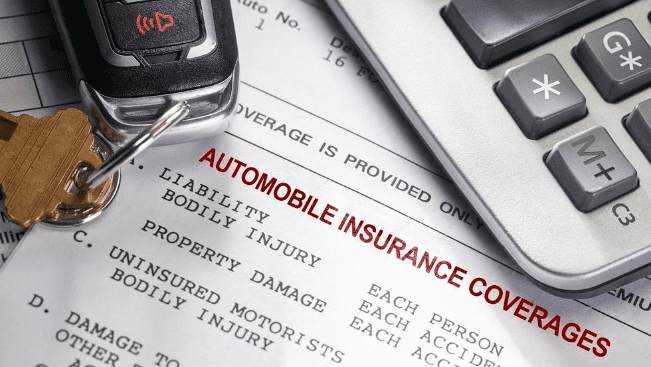
Do you find the nuances of auto insurance confusing? You’re not alone.
Choosing the right coverage and limits can be daunting. You may simply opt for the minimum coverage required in your state and the lowest deductibles you can afford, but that might leave you dangerously overexposed and underinsured.
To be certain you have the right insurance coverage, consider how much insurance you need to protect your assets and cover your potential liabilities.
Here’s a helpful guide to take the mystery out of auto insurance and help you rise to the challenge.
No fault vs. tort
There are two different forms of auto insurance in the U.S.: no fault and tort (or at fault). In a no-fault state, drivers have insurance to cover their own injuries and damages, rather than using insurance to pay out to the other person. In other words, you don’t need to argue about who is to blame for an accident; you file a claim on your own insurance.
No-fault laws don’t protect you from being sued, but they do place restrictions on when you could be sued. The injuries or damages must pass a monetary or verbal threshold (i.e., medical expenses exceed a certain dollar figure or the injuries are sufficiently serious). However, in every state except New Hampshire, you will also need liability insurance to cover damages if you are to blame for the accident.
In a tort state, the law assigns blame and the person deemed responsible will have to cover medical bills, damages and awards for pain and suffering (if any). Your insurance will pay up to the limits specified in your policy. If the damages exceed your limits, you’ll be responsible for the remaining payments.
Liability coverage
Liability auto insurance covers bodily injury (BI) and property damage (PD) to third parties (other people), which is the responsibility of the insured driver. Limit minimums vary by state starting at $10,000 per person and $30,000 per accident. Maximums can be as high as $500,000 per accident. Limits may be individual or combined. A common policy structure offers a split of $100,000 BI per person, $300,000 BI per accident and $50,000 PD per accident.
Liability insurance also covers collisions with an uninsured or underinsured driver. If you are in a collision with an uninsured or underinsured driver, your liability insurance will cover the difference in losses.
Consider the other person’s assets — not just your own
When making a liability exposure plan with your insurance professional, make sure you insure your auto with the other person in mind. Even if you feel your car isn’t fancy or you don’t have a lot, you need to make sure you can cover the other person’s loss as well as your own. If you are at fault in an accident with a luxury vehicle, you’ll need to make sure your auto limits are high enough to cover their repairs (or replacement if the luxury vehicle is written off as a total loss).
How much liability insurance do you need? The costs of emergency medical care and inpatient stays are very high. And while the minimum limit for property damage in some states can be as low as $5,000, cars cost significantly more to repair. If you are held responsible for an accident, you could very quickly breach your limit and end up having to fund the rest from your own pocket. Talk to your insurance professional about a plan for setting coverage limits.
Collision and comprehensive coverage
Two forms of insurance cover damage to your car: collision and comprehensive. Collision coverage pays out if your car is damaged or totaled in a collision with another object (such as a car or tree). Collision coverage usually has a deductible. It’s also usually optional, although some states require it if your vehicle is leased or financed by a bank or credit union.
Comprehensive insurance pays out if your car is damaged by an incident in which there was no collision. This could be a fire, theft, act of vandalism, weather event (windstorm, hail, water, flood or earthquake) or random event (such as damage caused by an animal). Comprehensive insurance also has a deductible and is usually packaged with collision insurance to fully cover damage to the vehicle.
It’s well worth investing in both forms of coverage if your vehicle has a substantial value. If you don’t have collision insurance and you’re hit by an at-fault driver with a limit of $5,000 on their insurance, you will only receive $5,000, even if the car is totaled.
Personal injury protection
Personal injury protection (PIP), or no-fault insurance, covers medical expenses, rehabilitation expenses, lost wages (in some cases) and other damages such as funeral expenses. It’s mandatory in no-fault states, where it pays out before liability insurance. However, the level of coverage required and the damages covered vary greatly from one state to the next. PIP claims can be made by an insured driver, a passenger or even an injured pedestrian.
Having adequate PIP limits is vital if you have limited or no health insurance.
Medical payments
Medical payments (MedPay) insurance covers your medical bills and those of your passengers, regardless of who’s at fault. It can also cover you if you’re hit as a pedestrian. The limit listed under MedPay on your policy is the maximum available for each driver or passenger. For example, if the limit is $2,500, the driver and each passenger will have up to $2,500 for medical bills resulting from the accident.
MedPay is usually optional and can act as a supplement to PIP in no-fault states. Like PIP, MedPay is important for medical coverage, but unlike PIP, it will not cover lost wages and it usually has fairly low limits.
Other coverage
There are other coverage options to consider, too. These include:
- Loss of use — covers the cost of a rental car while your car is being repaired
- Loan or gap insurance — helps you meet repayments if your vehicle is totaled before you finish paying for it
- Uninsured/underinsured motorist — covers damage and injuries caused by a driver lacking proper insurance
- Umbrella insurance — extends coverage across home or renters and auto policies to increase the limits on both
Contact your agent for a review
When deciding how much auto insurance you need, remember that state insurance requirements are not recommendations for levels of coverage — they are simply the minimum coverage required to legally operate a vehicle. Damages from an accident are likely to be significantly higher than state minimums. Your insurance agent can explain the various coverage options available and help you select what’s most appropriate for your situation.
This content is for informational purposes only and not for the purpose of providing professional, financial, medical or legal advice. You should contact your licensed professional to obtain advice with respect to any particular issue or problem.
Copyright © 2019 Applied Systems, Inc. All rights reserved.





